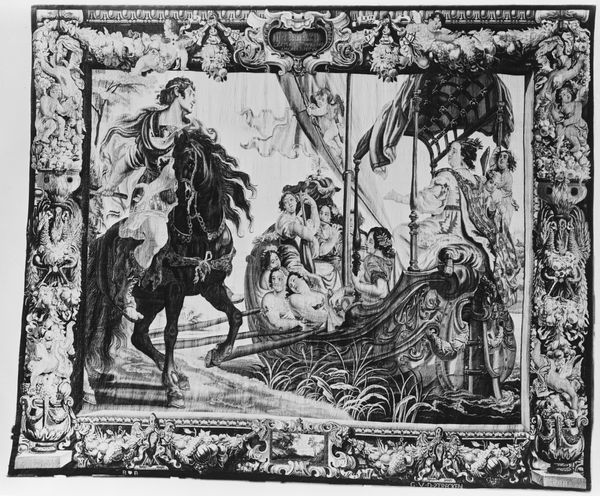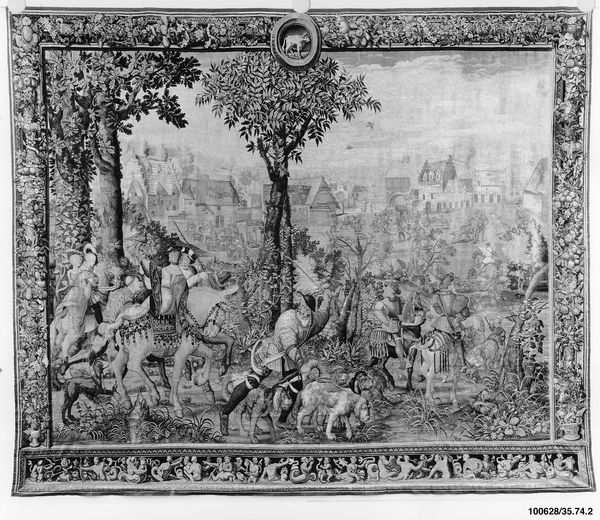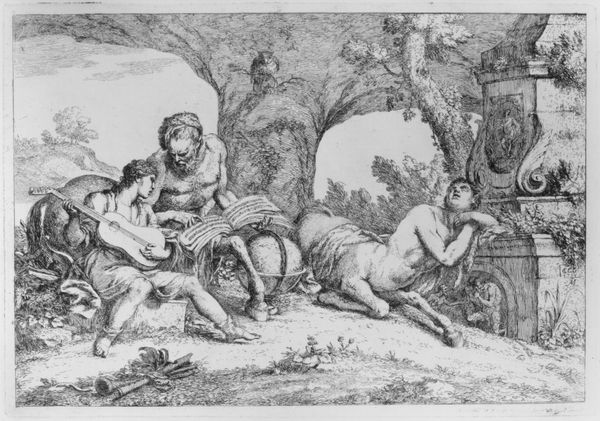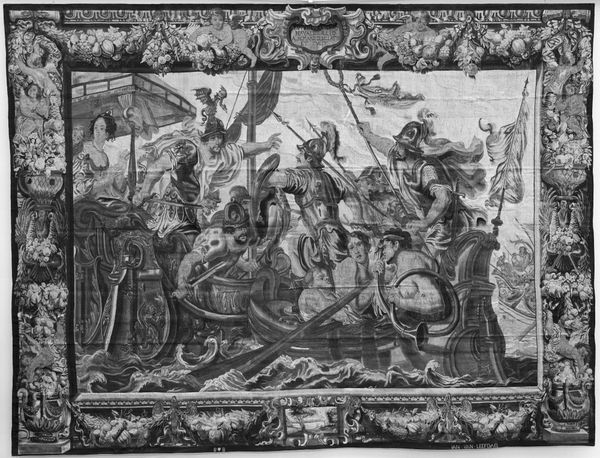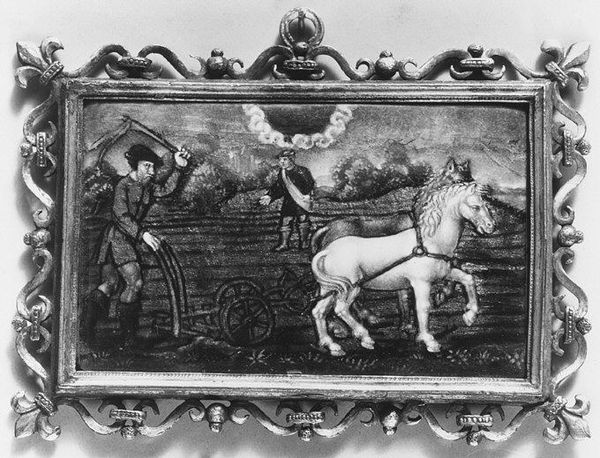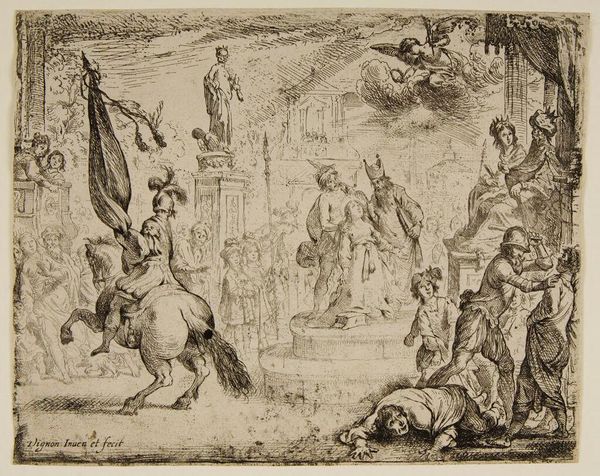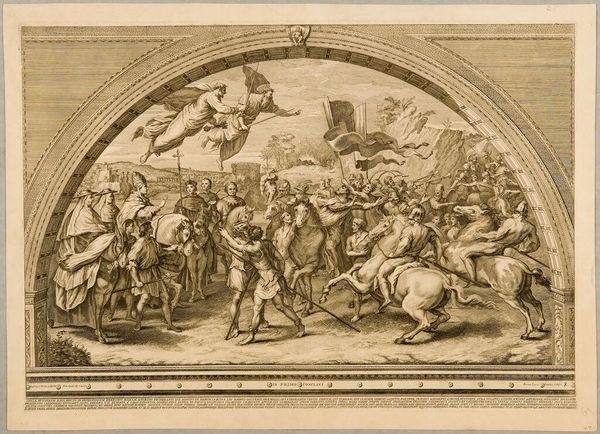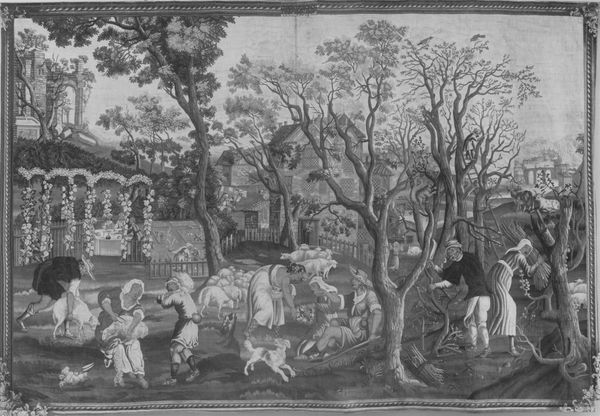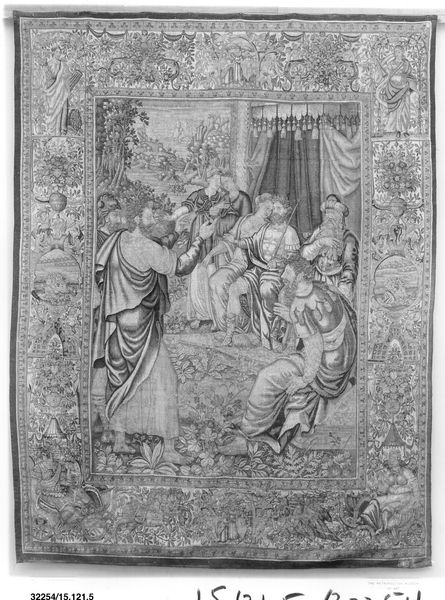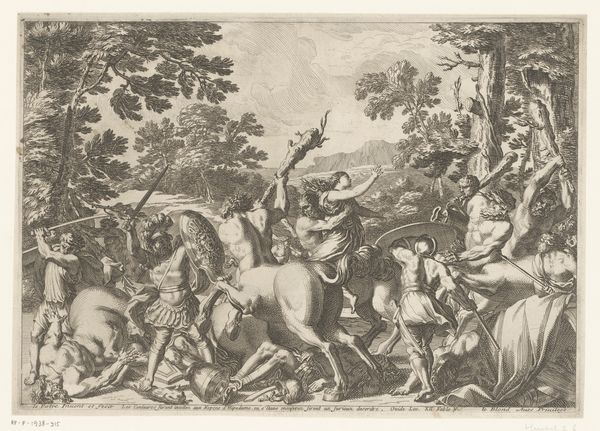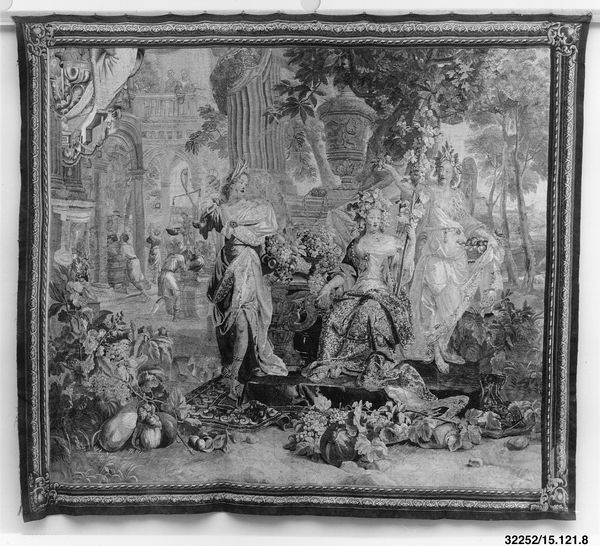
The Final Assault on the Boar, or December from a set of the Hunts of Maximilian 1526 - 1693
0:00
0:00
textile, sculpture, wood
#
medieval
#
dog
#
landscape
#
bird
#
textile
#
charcoal drawing
#
text
#
11_renaissance
#
highly detailed
#
forest
#
sculpture
#
horse
#
men
#
wood
#
decorative-art
Dimensions: Overall: 169 1/2 x 207 in. (430.5 x 525.8 cm)
Copyright: Public Domain
Curator: Looking at this tapestry, "The Final Assault on the Boar, or December," a piece from the Hunts of Maximilian series dating between 1526 and 1693, woven after a design by Bernard van Orley, the first thing that strikes me is the sheer amount of labor involved. Editor: Yes, it’s incredibly detailed! As I look closer at the hunting scene, the texture and richness suggest it must have taken a long time to weave using complex materials. How do you interpret this work in relation to its production and social context? Curator: Well, consider the materials: wool, silk, perhaps even precious metal threads. These were costly, meaning this tapestry was commissioned for someone of considerable wealth and power, likely within a specific social class with ties to courtly traditions. It's less about aesthetics, initially, and more about understanding the economy of its creation. The weaving process itself speaks to specialized workshops, perhaps even family businesses, where skills were passed down through generations. The "cartoon," or preparatory drawing by van Orley, became the basis for a collaborative effort. Editor: That's fascinating! So, it's about transforming a design into a luxurious commodity through specialized labour? Curator: Exactly. And beyond that, consider how these tapestries functioned. They insulated walls, yes, but also broadcasted power. A hunting scene like this reflects aristocratic pastimes, territorial dominance, and control over resources. Each element – the horses, dogs, the boar, the very forest itself – tells a story of wealth accumulation and social hierarchy, manifested through materials and technique. The way they are manufactured, by whom, and for whom becomes the central story of a piece like this. Does seeing it that way shift your perspective on the work? Editor: It does! I was initially drawn to the aesthetic qualities of the tapestry, but now I realize it represents a confluence of artistry, labor, and social status. The craftsmanship itself is a display of wealth. Thank you. Curator: Indeed, by focusing on material conditions, we move beyond surface appearances and engage with a deeper, more nuanced history of the work's place in the world.
Comments
No comments
Be the first to comment and join the conversation on the ultimate creative platform.
